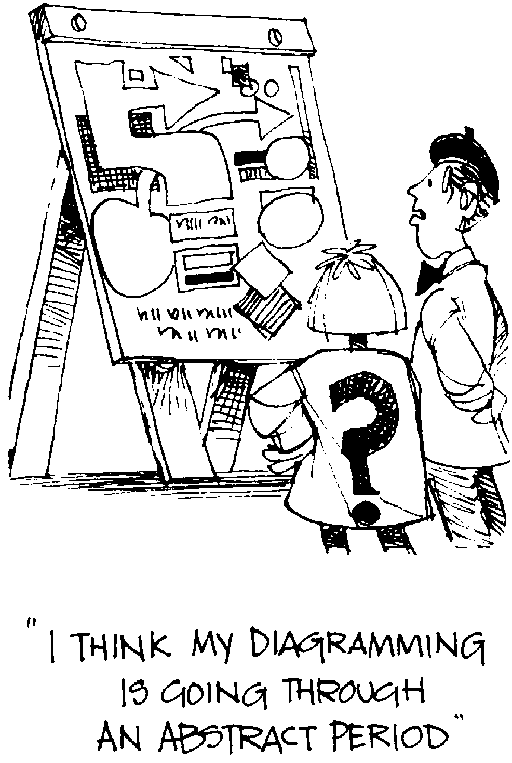1 Setting the scene
You have already partly looked at using language to represent systems in Week 3 and will continue to do so but for this week the focus is on using diagrams to represent systems. Again this is a big topic in itself and a skill that takes time to develop but what I will do is to tell you something about how I, as a systems practitioner, use and draw diagrams and give you the chance to try drawing some for yourself. I will mainly do this through two videos and an audio track rather than in text as you will both see the diagrams and hear what I say about it at the same time.
First of all, I will assume that you have no experience of using diagrams and that you may also be apprehensive about ‘drawing’ them. But the type of diagrams I will talk about need no drawing skills as such, as they mainly involve the arrangement of words, phrases, lines or arrows on paper or on a screen as I did in my answer to the last activity in Week 3. There are some diagrams that invoke notions of drawing, such as the rich picture. While this is a very important diagram in systems practice I have chosen not to include it in this course as I could not cover everything, but again the successful use of such diagrams does not depend on drawing abilities but on how deeply you think and feel about the complex situation you are representing.
Secondly, if you do want to study this aspect of systems thinking in practice in more detail there are several other video and text based resources on OpenLearn for you to work through shown in Box 1, some of which include the rich picture!
Box 1 Free resources on diagramming from The Open University
There is a wealth of free material on systems diagramming and related diagramming techniques from The Open University that you can also study and this list provides the most prominent:
- The OpenLearn course Systems diagramming [Tip: hold Ctrl and click a link to open it in a new tab. (Hide tip)] .
- A series of animated tutorials on the Systems Thinking Hub on OpenLearn
- A Guide to diagrams on OpenLearn.
- The OpenLearn courses Diagramming for development 1 - Bounding realities and Diagramming for development 2 - Exploring interrelationships
Lastly, you may already have encountered systems diagrams in some form before. However, we at The Open University use a fairly consistent set of conventions for particular diagram types which may be different to what you are used to. So even if you’ve used systems diagramming before, do work through the animated tutorial, if nothing else, as revision or a chance to practise a skill you may have not used for some time.
Activity 1 Your thoughts and feelings about diagramming
Make a note of your thoughts and feelings about drawing diagrams. Are you worried or excited? Do you feel confused as to why diagrams are a necessary part of systems thinking in practice or just accepting that they are?
Comment
If you are worried or nervous, you are not alone. It is a common reaction because diagramming is equated with drawing. As I have already said an ability to draw is not important. Equally you may be aware how much information is now presented in a graphical form. Understanding some of the ins and outs of diagramming is a lesson in thinking and representing that thinking on paper or screen in ways that is not just linear text or spoken words.

